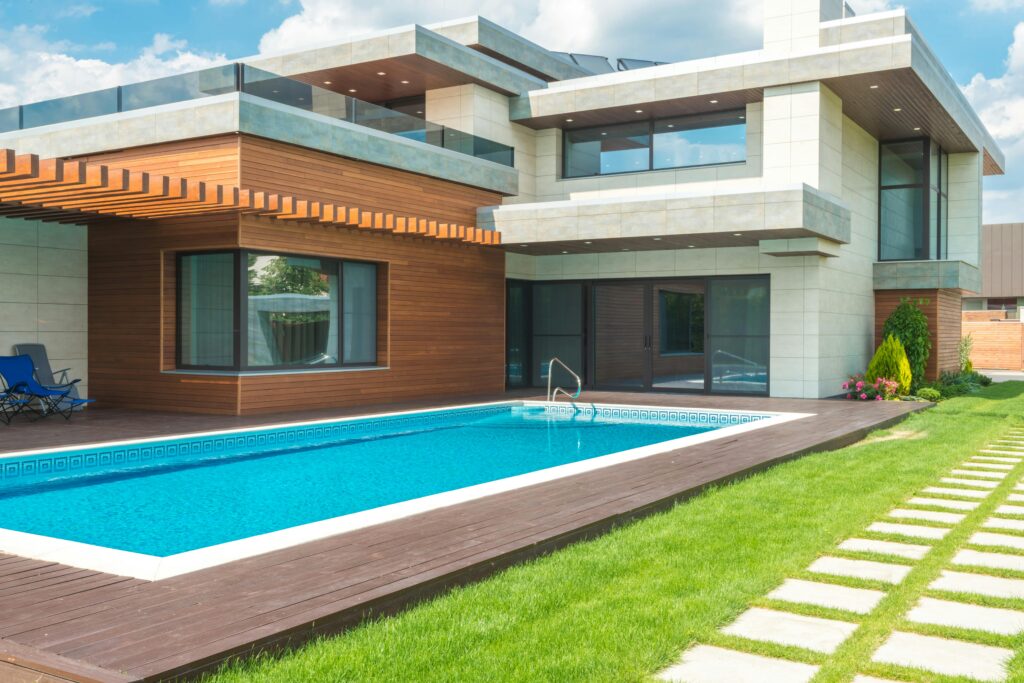Windows are a crucial element in home design, influencing aesthetics, energy efficiency, and natural lighting. Modern window design blends innovation and style to create functional, visually appealing spaces that enhance the overall ambiance of a home. With advancements in materials, smart technology, and architectural trends, homeowners now have more options than ever to elevate their living spaces through thoughtfully designed windows.
This guide explores modern window design, covering the latest innovations, materials, and trends that bring both practicality and elegance to any home. Whether renovating or building from scratch, selecting the right windows can significantly impact comfort, efficiency, and the long-term value of your property.
Table of Contents
ToggleKey Takeaways
- Modern windows combine aesthetics, energy efficiency, and smart technology.
- High-performance glass and framing materials enhance insulation and durability.
- Floor-to-ceiling windows, black window frames, and minimalist designs are trending.
- Smart windows with automated shading improve convenience and energy savings.
- Proper window placement maximizes natural light and enhances home aesthetics.
Innovations in Modern Window Design
Modern window design has evolved to incorporate cutting-edge technologies and materials that enhance both aesthetics and functionality. Homeowners now have access to energy-efficient solutions, smart technology, and noise-reducing features that improve comfort and sustainability. These innovations not only add to the visual appeal of a home but also contribute to long-term savings by reducing energy consumption and maintenance costs. Whether upgrading an existing home or designing a new one, selecting the right window innovations can elevate the overall living experience.
Energy-Efficient Windows
Energy-efficient windows minimize heat loss in winter and prevent excess heat gain in summer. These windows are designed with insulated glass, low-emissivity (Low-E) coatings, and gas-filled panes that improve thermal performance. Choosing windows with high energy ratings can significantly reduce heating and cooling costs while maintaining indoor comfort.
Smart Windows
Smart technology has transformed window design, allowing homeowners to control light and privacy with a touch of a button. Electrochromic glass, also known as switchable glass, adjusts transparency based on electrical signals, reducing glare and optimizing natural lighting. Smart windows can also integrate with home automation systems for seamless control through voice commands or mobile apps.
Noise-Reducing Windows
Modern homes benefit from noise-reducing windows that create a peaceful indoor environment. Laminated glass and multi-pane designs help block outside noise, making them ideal for urban homes or properties near busy roads. These windows improve acoustic insulation while maintaining sleek and stylish aesthetics.

Popular Materials in Modern Window Design
When selecting windows for a modern home, the material plays a crucial role in aesthetics, durability, energy efficiency, and maintenance. Advances in window technology have introduced a variety of materials that not only enhance the overall style of a home but also improve insulation and reduce energy costs. Whether you prefer the sleek look of aluminum, the warmth of wood, or the low-maintenance appeal of vinyl, choosing the right material can significantly impact the functionality and longevity of your windows. Below, we explore the most popular materials in modern window design and how they can elevate your home’s style and efficiency.
Aluminum Frames
Aluminum windows offer a contemporary look with sleek lines and durability. They are resistant to corrosion and require minimal maintenance, making them ideal for modern architecture. Many aluminum windows also feature thermal breaks to improve energy efficiency.
Fiberglass Windows
Fiberglass frames provide superior insulation and durability. They resist warping, swelling, and rotting, making them a low-maintenance option for homeowners seeking longevity. Fiberglass windows can also be painted to match any design aesthetic.
Vinyl Windows
Vinyl windows are an affordable yet energy-efficient choice. They offer excellent insulation, reducing energy costs while maintaining a clean and modern appearance. Available in various colors and styles, vinyl windows complement different home designs.
Modern Window Styles and Trends
Window design has evolved significantly, blending aesthetics with functionality to meet the demands of contemporary homes. Modern window styles focus on maximizing natural light, improving energy efficiency, and enhancing architectural appeal. From sleek floor-to-ceiling glass panels to smart windows with automated controls, the latest trends prioritize both style and practicality. Homeowners are increasingly looking for customizable options that align with their home’s design while offering durability and ease of maintenance. In this section, we explore the most popular modern window styles and trends that are redefining home design in 2025.
Floor-to-Ceiling Windows
Expansive floor-to-ceiling windows bring in maximum natural light and create a seamless connection between indoor and outdoor spaces. These large glass panels enhance openness and provide stunning views, making them a focal point in contemporary home design.
Black Window Frames
Black window frames have gained popularity for their bold, modern aesthetic. They add contrast and sophistication to both interior and exterior designs, creating a sleek and timeless look.
Minimalist Frameless Windows
Frameless windows provide an unobstructed view and a seamless transition between spaces. This minimalist approach is perfect for modern homes that emphasize clean lines and simplicity.
Sliding and Folding Glass Doors
Sliding and folding glass doors function as both windows and space dividers, maximizing flexibility in modern home design. They allow for easy access to outdoor areas while maintaining a sleek and open feel.
Maximizing Natural Light and Ventilation
Proper window placement enhances both natural light and ventilation, making spaces feel more open, inviting, and energy-efficient. Strategic positioning of windows can brighten interiors, reduce reliance on artificial lighting, and promote better air circulation. South-facing windows maximize daylight exposure throughout the day, while clerestory windows bring in soft, indirect sunlight without compromising privacy. Large sliding or casement windows encourage cross-ventilation, allowing fresh air to circulate and reducing indoor humidity.
In open-concept spaces, floor-to-ceiling windows or glass doors seamlessly connect indoor and outdoor areas, creating a sense of openness and fluidity. Skylights and transom windows are excellent for rooms with limited wall space, introducing additional sunlight from above. For urban homes with restricted airflow, tilt-and-turn windows provide controlled ventilation without compromising security. By combining different window styles and strategic placement, homeowners can enhance comfort, improve indoor air quality, and create a brighter, more refreshing living environment.
Proper window placement enhances both natural light and ventilation. Strategic positioning of windows can brighten interiors while improving airflow. Consider the following placement techniques:
- South-facing windows capture the most sunlight throughout the day, reducing the need for artificial lighting.
- Cross-ventilation designs with windows on opposite walls promote better air circulation.
- Skylights and clerestory windows introduce additional light into darker areas of the home.
Frequently Asked Questions
1. What are the benefits of energy-efficient windows?
Energy-efficient windows reduce heating and cooling costs, improve indoor comfort, and minimize environmental impact by lowering energy consumption.
2. Are smart windows worth the investment?
Yes, smart windows enhance convenience, improve energy efficiency, and provide adjustable privacy, making them a valuable addition to modern homes.
3. What window styles are best for modern homes?
Floor-to-ceiling windows, black-framed windows, and frameless glass designs are some of the most popular styles for modern home aesthetics.
4. How can I improve natural lighting with window placement?
Strategic placement, such as south-facing windows and skylights, can maximize natural light and reduce reliance on artificial lighting.
Conclusion
Modern window design merges functionality with aesthetics, providing homeowners with innovative solutions that enhance comfort, efficiency, and style. From energy-efficient options to smart technology integration, selecting the right windows can transform any living space into a brighter, more sustainable environment. Whether embracing floor-to-ceiling glass panels or opting for minimalist designs, modern windows contribute to a home’s overall beauty and functionality, making them a worthwhile investment.



One Response